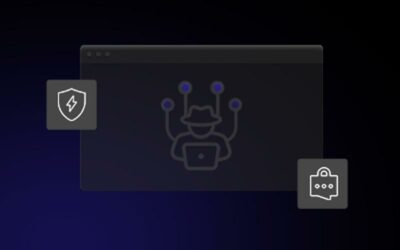As regulatory compliance and cybersecurity rise in business priority, hiring cybersecurity professionals to examine these risks is at the top of the list. Fueling these security and risk trends are incidences like data breaches.
These trends illustrate continuing but underappreciated strategic shifts in the security world. Each predicts a big impact on the sector and the potential for significant upheaval.
Here are a few new trends you might be interested in to protect yourself and your business from cybersecurity risks.
CYBERSECURITY MESH
The cybersecurity mesh is a new concept in security architecture that allows a distributed company to install and expand security where it’s needed most with machine identity management. “Cybersecurity mesh is a cyber defense strategy that independently secures each device with its own perimeter — such as firewalls and network protection tools. Many security practices use a single perimeter to secure an entire IT environment, but a cybersecurity mesh uses a holistic approach (via insight.com).” This mesh accelerated the trend of many digital assets for people outside traditional enterprise infrastructure.
Furthermore, cybersecurity professionals are tasked with securing a plethora of emerging technology. This necessitates security alternatives that are flexible, agile, scalable, and composable, allowing the firm to move forward while being secure.
CYBER-INSIGHT BOARDS
With increased public security breaches and increasingly common business disruptions due to ransomware, boards are paying more attention to cybersecurity and recognizing it as a massive risk to enterprises.
In addition, the panels form dedicated committees that focus on cybersecurity matters, often led by a member with security experience, a chief information security officer, or a third-party consultant.
Now the chief information security officer, or CISO, can expect increased scrutiny and expectations, along with support and resources. Be prepared to improve communication and expect more challenging questions from your board.
VENDOR CONSOLIDATION
Today’s security directors have excessive instruments at their disposal, meaning 78% of CISOs have at least 15 cybersecurity vendor technologies in their portfolio, with 12% having 40 or more. Sadly, too many security providers represent more complicated security procedures and more security personnel.
Most companies identify vendor consolidation to improve security, with 80 percent implementing or considering such a strategy. Large security companies are responding by developing more integrated products.
Consolidation, on the other hand, is complex and takes years to implement. While decreased costs drive this movement, more streamlined processes and reduced risk are typically more feasible.
IDENTITY-FIRST SECURITY
Hybrid work and migration to cloud applications have cemented the identification trend as the new ideal. Identity-first security isn’t a new concept, but it’s gaining traction as hackers target identity and access management systems for stealthy persistence.
Breach techniques that exploit abused credentials are now the most common. Nation-state attackers are successfully targeting Active Directory and the identity infrastructure. Identity is an essential lateral mobility strategy in air-gapped networks.
Multifactor authentication is becoming more popular, but it is not a cure-all. The necessity of correctly configuring, maintaining, and monitoring identity infrastructure cannot be overstated.
CRITICAL SECURITY CAPACITY
The number of nonhuman entities that make up current apps increases dramatically as digital transformation proceeds. Managing machine IDs has thus become a crucial aspect of security operations.
APIs connect all modern applications, which are made up of different services. Because attackers can leverage your suppliers’ API access and your important data, each of these services must be authenticated. Therefore, machine identity management systems and methodologies are still evolving. However, company-wide planning for managing identities and certificates helps your company safeguard its digital transition.
BREACH & ATTACK SIMULATION
Breach and attack simulations allow constant testing and acceptance of security procedures and assessment of the organization’s vulnerability to external attacks. It also provides specialized analyses and identifies dangers to irreplaceable assets such as personal data.
BAS even provides businesses with training to help them grow.
There are many things you need to protect your business from. Therefore, know what protection your business needs to get the right fit. When you keep these security tips in mind, you can ease your worries and know you have the best protection possible.



